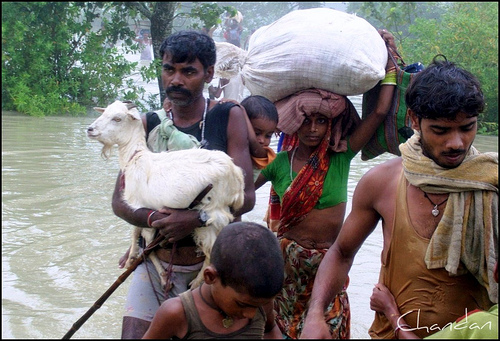Climate Change Adaptation
There is a bridge in Lodhi Gardens and there is a plaque that declares that this bridge was constructed in 1556 by Akbar’s minister over a tributary of Yamuna river that used to flow from here toward what is now known as South Delhi. The river since has changed its course and there is no water under the bridge. This is a typical example of what happened in the past when mitigative actions of bounding the river sides of the tributary were not taken, and the river changed its course. Of course the context was that density of population was low, therefore the infrastructure damage that a river would cause due to course change was manageable. While mitigation is ideal, adaptation in the short run is necessary to cope with the floods that may happen in the course of climate change.

Recently on 15th Febrary 2009 Indian Express carried an article on what happened to Kosi River that caused tremendous inundation and flooding in Bihar a few months back and how the engineers fixed the breach. The impact of damages and devastation due to floods is described very vividly in Solution Exchange for Disaster Management Community this week, by a person working for an NGO and I quote “I recently went to Bihar as part of a team to assess the situation in Madhepura and Supaul, the two districts worst affected by the flood caused by a breach in the Kosi river dam. Based on our observations, we are designing the intervention strategies for restoring livelihoods for these areas. Some of our observations are:
- The poorest of the poor are still displaced and don’t have a place to live hence are desperately hoping for some help from either the government or NGOs or both.
- Most of the areas, even after three months are still inundated making agriculture virtually impossible.
- The river at many places has deposited sand and silt thereby making the land infertile; according to the community not much can be grown on such land.
- People have lost most of their cattle and there is no fodder and safe drinking water for the surviving ones leading to more cattle deaths.
- The people who traditionally migrate to other states for work, cannot do so as they do not have a place (home) where they can leave their family.
- The work under the NREGA has not yet started due to inundation of the whole area.
- Some of the traditional crafts existing with the community are related to bamboo works and making mattresses out of hay.
- Caste continues to determine the livelihood options available to the community
- Jute is grown extensively in the area but there are few opportunities available for value addition”
This is an issue with the Himalayan rivers, including our own Yamuna and Ganga servicing Delhi. This could happen to Delhi. Are we prepared?
Image Courtesy Socrious



